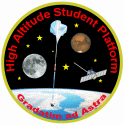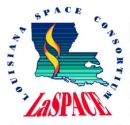



Payload 12 Information
Payload Flight Number:
Institution:
Payload Title:
Robotic Arm Materials Matching and Manipulation: RAM3.1
Student Leader:
Faculty Advisor:
Payload class:
LARGE
Payload ID Number:
12
Mass:
Current:
Serial Downlink:
Analog Downlink:
Serial Commands:
Discrete Commands:
Payload Specification & Integration Plan
Due:
Delivered:
Payload Integration Certification
Scheduled:
Actual:
Flight Operation Plan
Due:
Delivered:
Final Flight / Science Report
Due:
Delivered:
Abstract:
The need for satellite maintenance is growing as established satellites run out of fuel and degrade in the harsh environments of space. NASA’s Satellite Servicing Projects Division (SSPD) is developing unmanned craft to provide a lower-cost, lower-risk method of extending legacy satellites’ lifetimes. While only two active satellites are designed for maintenance, the next generation, including the James Webb Space Telescope, plan to leverage robotic refueling and maintenance. Our 2018 experiment for HASP tested relatively low-powered, semi-autonomous robotic dexterity, running repeated iterations of tests that require precision actuation, computer vision, and force-torque sensors. A robotic arm performed simple tasks such as toggling switches, twisting objects, and opening/closing velcro flaps as one might while refueling a satellite on-orbit. RAM 3.1 will test a series of small cameras for potential use on RAM. The purpose of this experiment is to find the best camera to use to read the APRIL tags and observe the effects of glare. The reading of these tags is integral to the arm being able to complete its tasks. Throughout the flight, we will measure any degradation in performance, response time, and accuracy. We will also test the efficacy of computer-vision in different lighting conditions.
Payload Integration Plan:
Science Report:
Monthly Briefings:
|